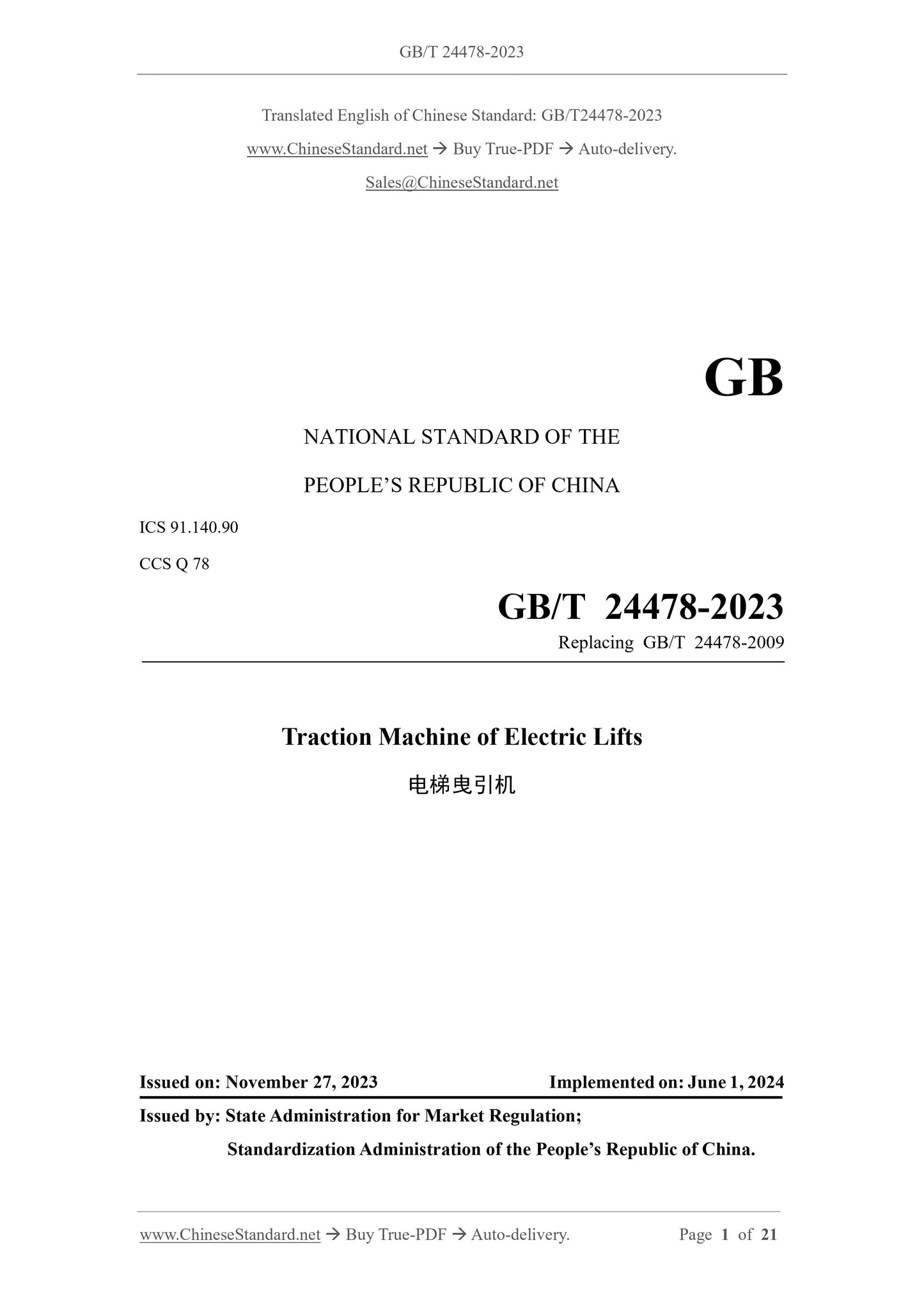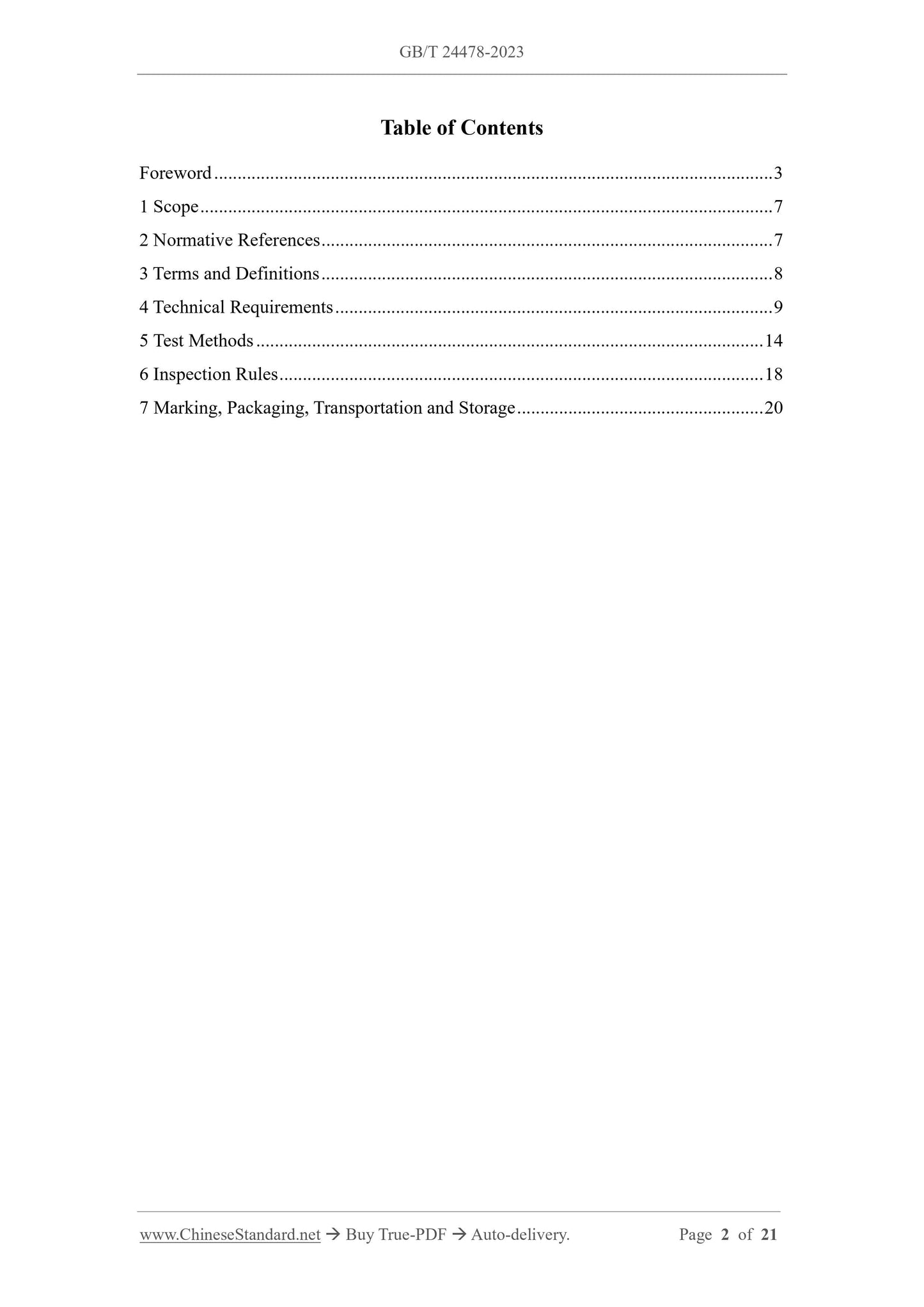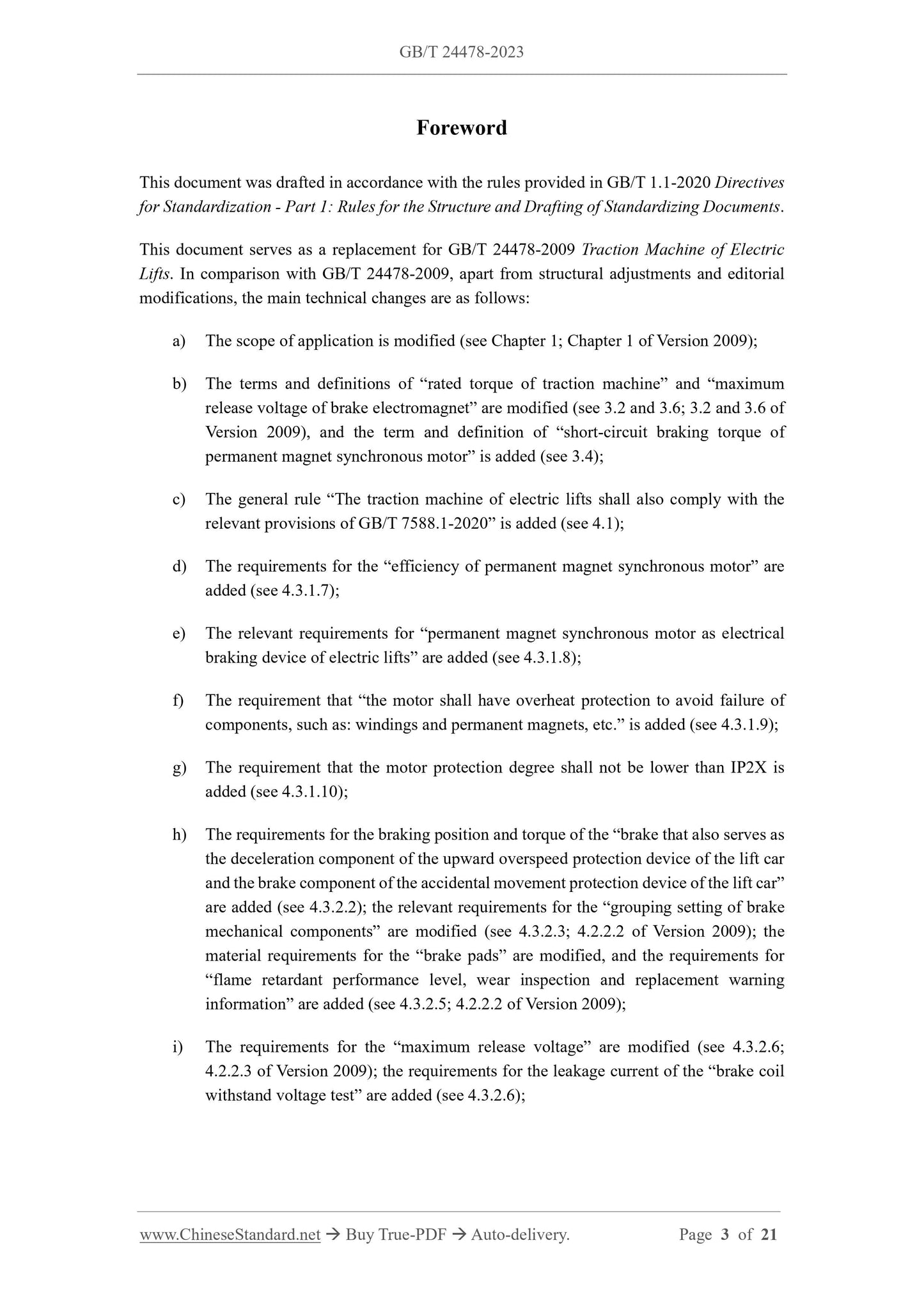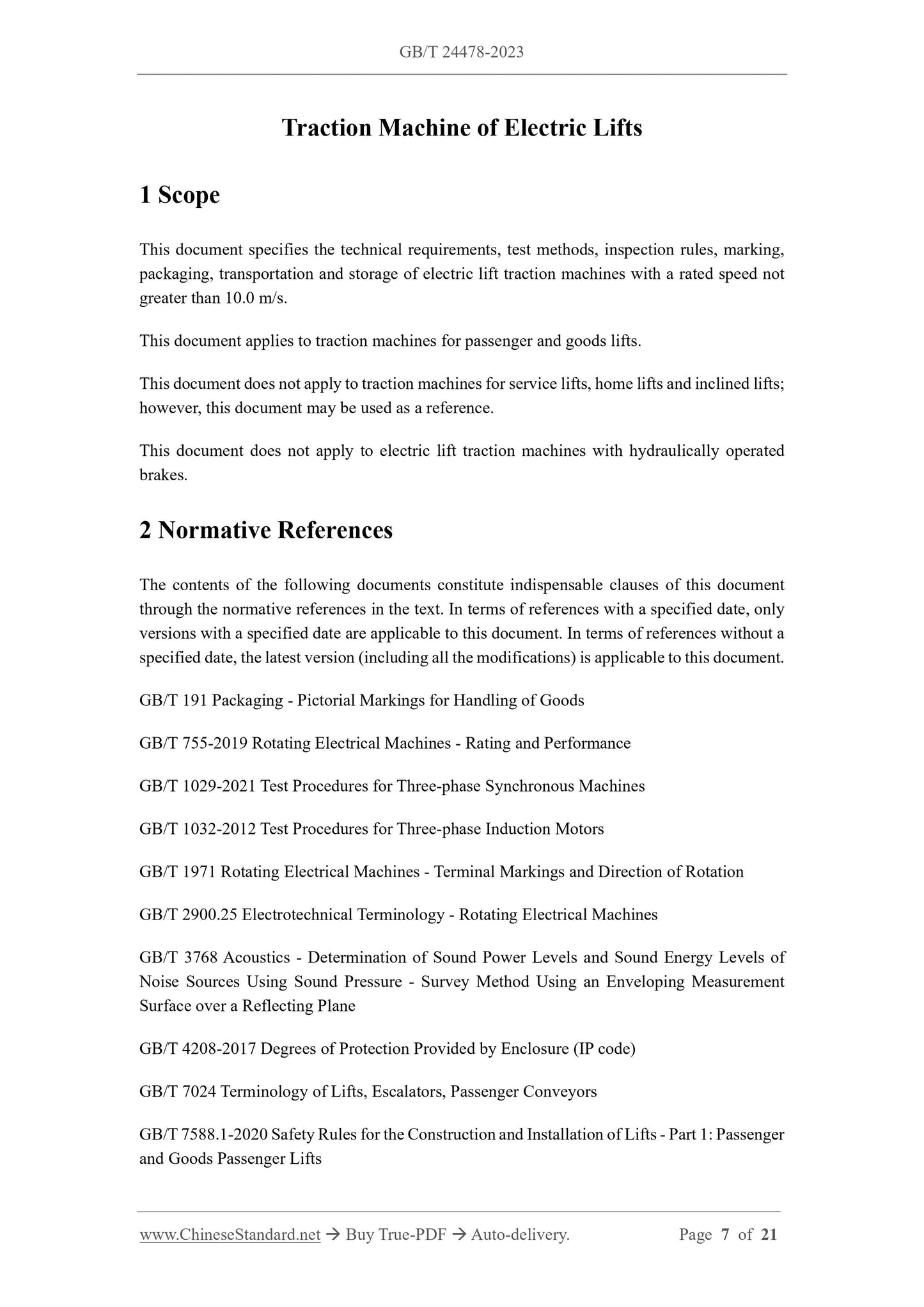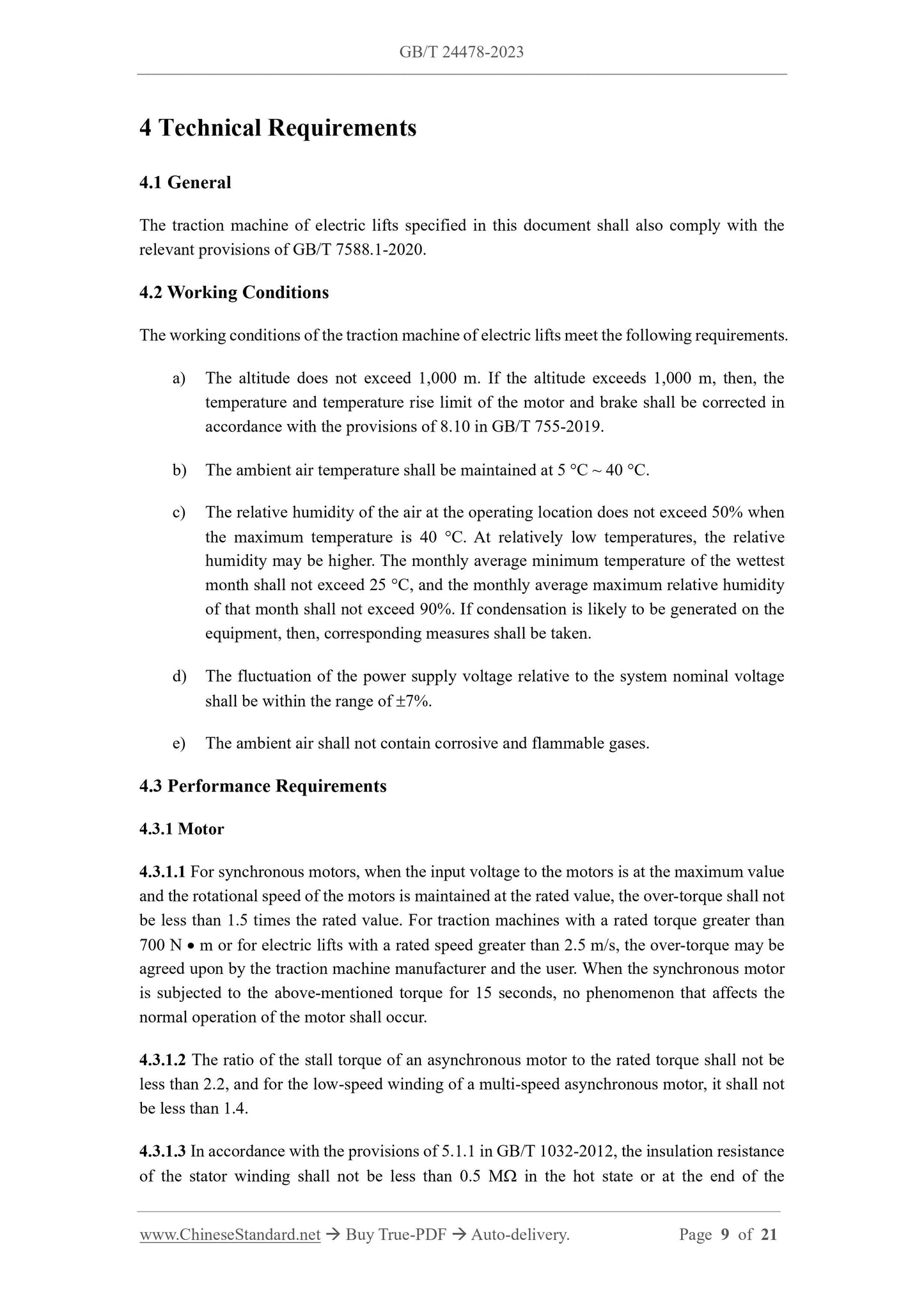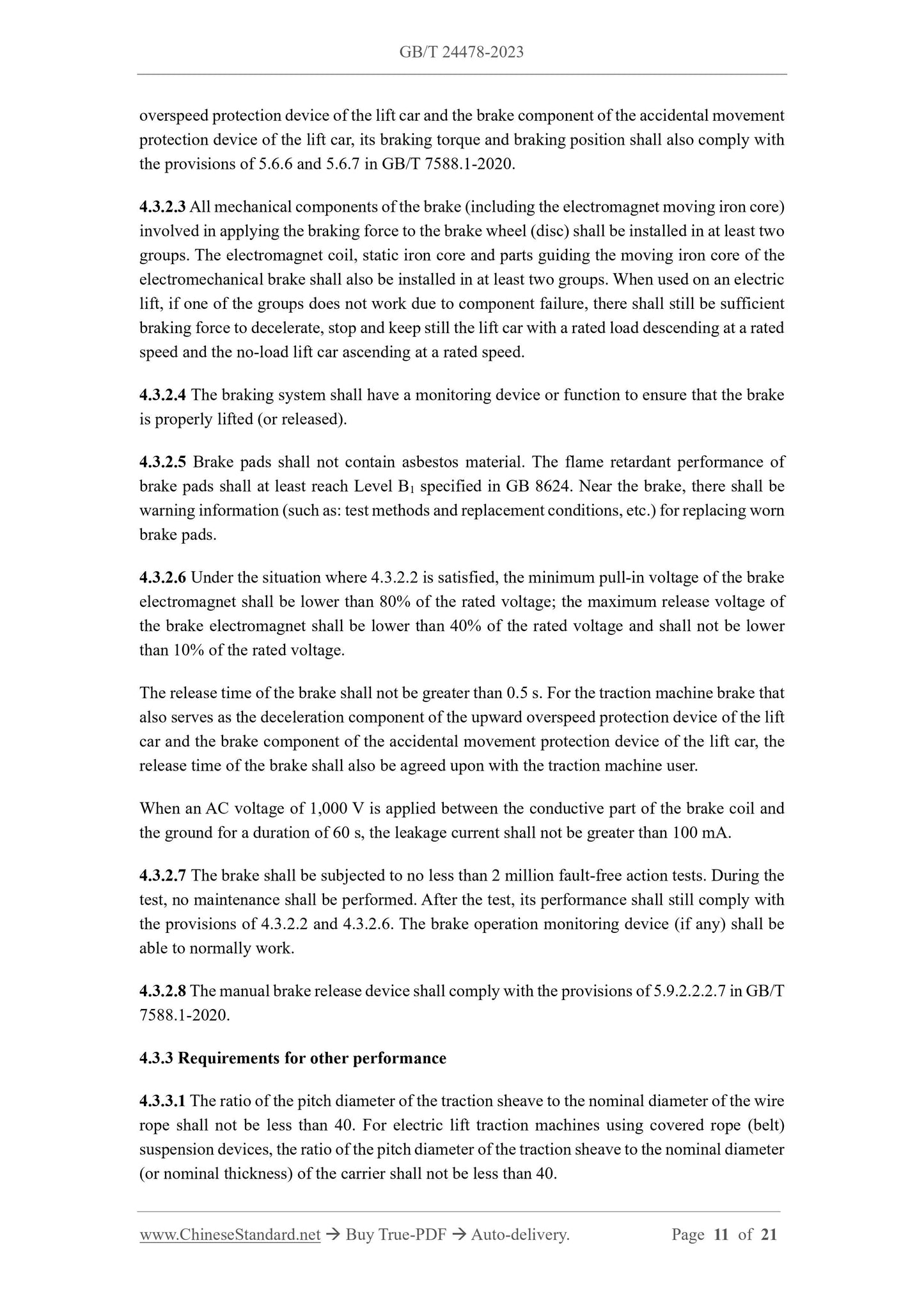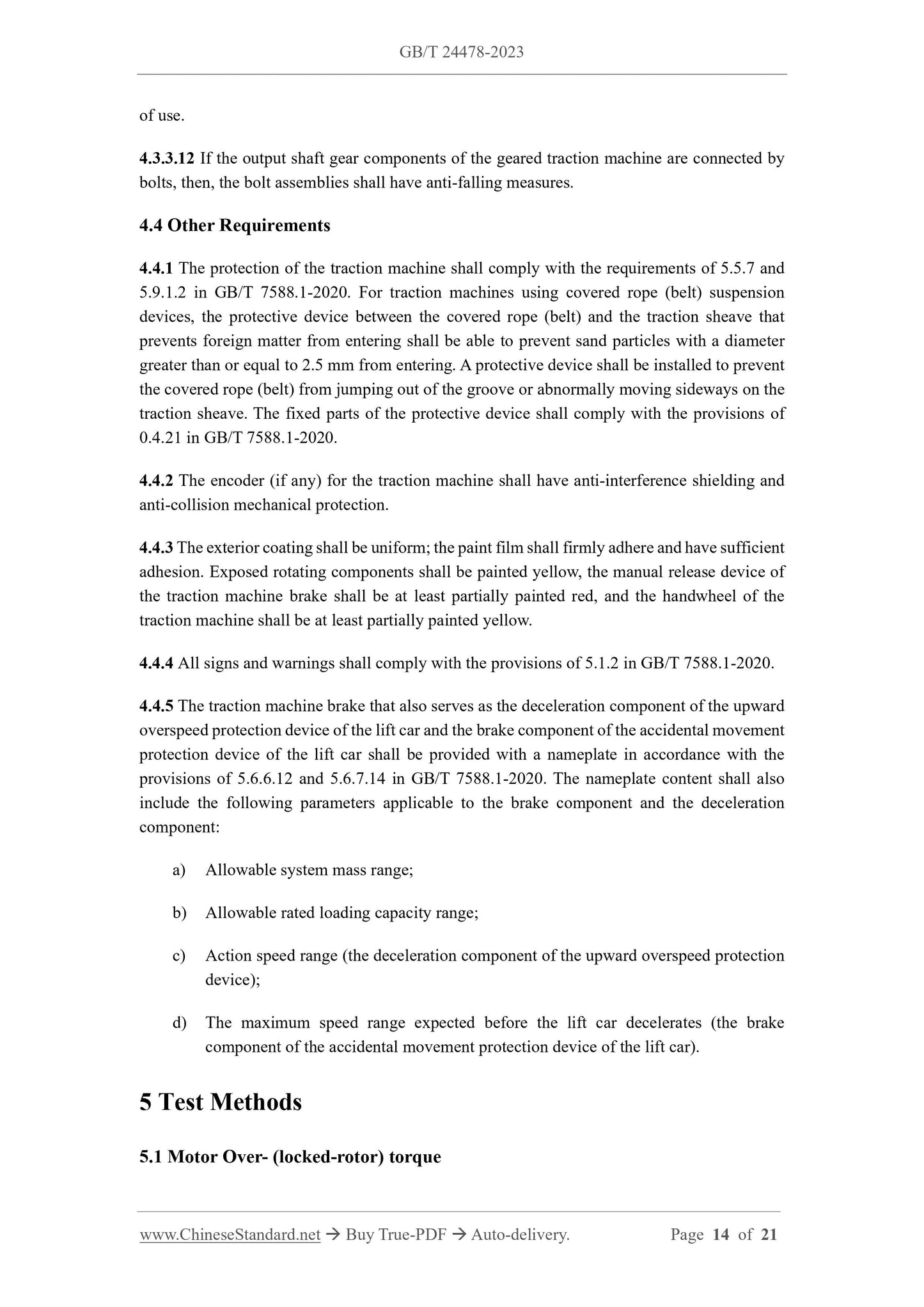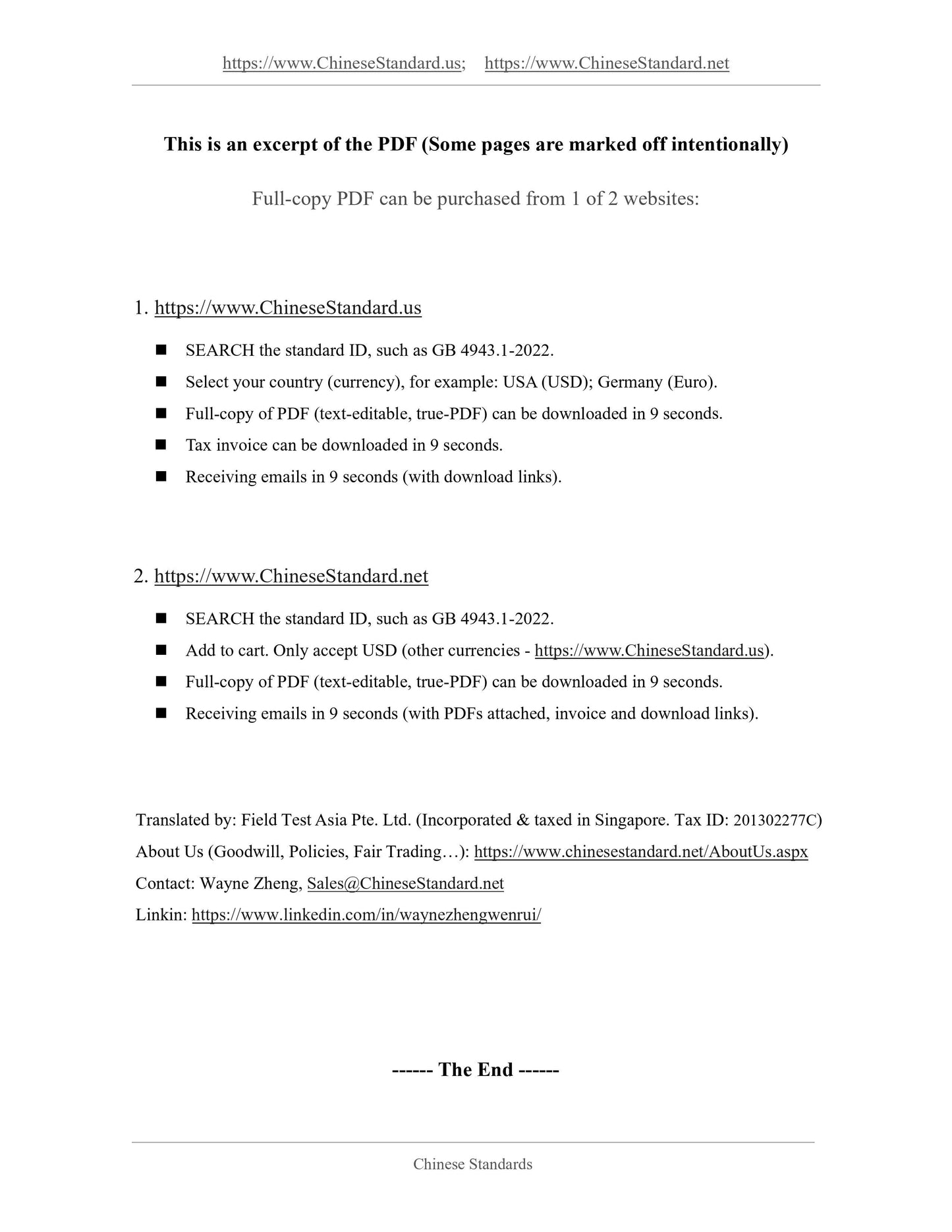1
/
of
8
www.ChineseStandard.us -- Field Test Asia Pte. Ltd.
GB/T 24478-2023 English PDF (GB/T24478-2023)
GB/T 24478-2023 English PDF (GB/T24478-2023)
Regular price
$260.00
Regular price
Sale price
$260.00
Unit price
/
per
Shipping calculated at checkout.
Couldn't load pickup availability
GB/T 24478-2023: Traction machine of electric lifts
Delivery: 9 seconds. Download (and Email) true-PDF + Invoice.Get Quotation: Click GB/T 24478-2023 (Self-service in 1-minute)
Newer / historical versions: GB/T 24478-2023
Preview True-PDF
Scope
This document specifies the technical requirements, test methods, inspection rules, marking,packaging, transportation and storage of electric lift traction machines with a rated speed not
greater than 10.0 m/s.
This document applies to traction machines for passenger and goods lifts.
This document does not apply to traction machines for service lifts, home lifts and inclined lifts;
however, this document may be used as a reference.
This document does not apply to electric lift traction machines with hydraulically operated
brakes.
Basic Data
| Standard ID | GB/T 24478-2023 (GB/T24478-2023) |
| Description (Translated English) | Traction machine of electric lifts |
| Sector / Industry | National Standard (Recommended) |
| Classification of Chinese Standard | Q78 |
| Classification of International Standard | 91.140.90 |
| Word Count Estimation | 15,199 |
| Date of Issue | 2023-11-27 |
| Date of Implementation | 2024-06-01 |
| Older Standard (superseded by this standard) | GB/T 24478-2009 |
| Issuing agency(ies) | State Administration for Market Regulation, China National Standardization Administration |
Share
